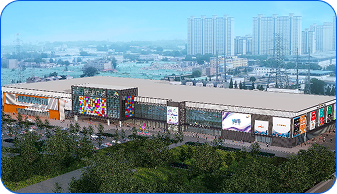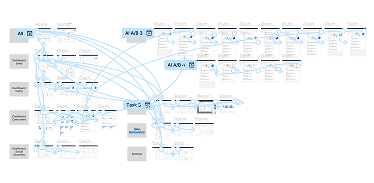

Empowering mall operations teams with easier data discoverability and more efficient decision-making for merchant management and marketing strategy.
| My Role: | Project Context: |
|---|---|
| UX/UI design lead, Contextual Research & User Research, Design Evaluation | School project sponsored by iShine City |
| Project Team: | Timeline: |
| 1 designer, 2 Researchers | Aug. 2024 - May.2025 (9 months) |
iShine City is a community-focused shopping mall in Beijing, serving over 20,000 visitors each week and hosting more than 100 tenants across retail, dining, and lifestyle services.

Shopping malls face growing pressure globally, especially in the U.S. where vacancy rates exceeded 6% and over 5,000 stores closed in 2020. In China, while some malls are adopting innovations like WeChat mini-programs and live commerce, many still lack streamlined platforms to support internal operations. Initiated by iShine City, this project tackles operational pain points and drives mall growth.
Mall operators are under increasing pressure to boost performance as consumer behavior shifts and tenant expectations evolve. At iShine City, internal teams such as leasing and marketing play a central role in driving operational success; however, they struggle with essential tasks such as analyzing data and crafting targeted management strategies. Supporting these teams in overcoming their operational challenges is essential to driving business growth.
Gives mall operations teams a centralized hub to easily access, explore, and understand key business data—all in one place.
Supports smarter decision-making by analyzing complex datasets and surfacing tailored insights for targeted action.
To assess the usability of our new design, we conducted task-based user testing with key business users. Five participants (n=5) completed three core tasks, along with a within-subjects A/B test using our interactive prototype. We then analyzed a set of usability metrics to assess how well the design supported user efficiency, clarity, and overall effectiveness.


When designing for enterprise teams, one of the biggest challenges is navigating domain knowledge. Workflows are often complex, fragmented, and deeply ingrained. To truly understand user needs, it was important to go beyond surface-level interviews. By observing users’ daily routines and closely reviewing how they work, we uncovered friction points and unmet needs that would have otherwise gone unnoticed.
A key challenge in this project was designing AI interactions that felt intuitive and useful. Rather than relying on assumptions, we used A/B testing to compare different interaction models. This allowed us to evaluate usability, identify what worked best for users, and make informed design decisions with confidence.